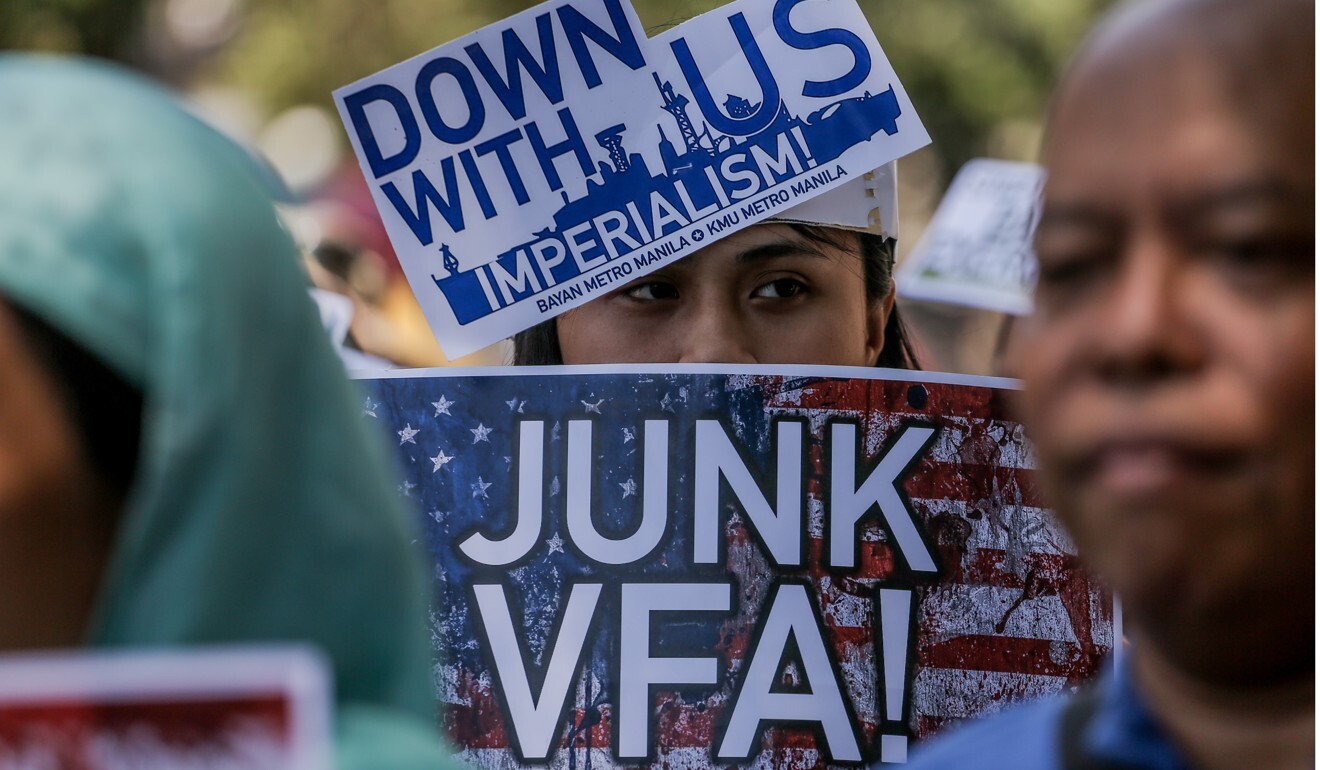
Why deferring a decision on US-Philippine VFA military pact is Duterte’s best bet
- The six-month reprieve for the Visiting Forces Agreement means it will be debated during the election campaign, essentially putting it to a referendum
- Duterte does not want to leave a legacy of rupturing the accord or of putting his country in a bind amid US-China acrimony, so has found a way out of the dilemma
The Southeast Asian country hosted among the biggest US bases in the region until the early 1990s and later that decade started holding annual military exercises with the US. In 2014 it allowed American troops rotational presence in several agreed locations across the archipelago.
Washington has been Manila’s time-honoured defence partner and its security umbrella, especially during the Cold War, allowing it to focus on internal security, notably counter-insurgency. Over time, the alliance adjusted to changing threats, moving away from traditional security to areas such as counterterrorism; humanitarian assistance and disaster relief; search and rescue; maritime domain awareness and recently even coastguard cooperation.
US-Philippine military pact ‘in limbo’ until Duterte leaves office
But the Philippines’ close ties with its former coloniser also has its downsides. Manila was one of the most devastated Pacific cities during World War II, earning it the nickname “Warsaw of the East”. The Philippines also got engaged in many US-led wars. This came to a head when a Filipino migrant worker was captured in Iraq in 2004, leading to Manila’s withdrawal from a multinational coalition battling militants.
Critics also highlighted how overreliance on the US stunted the military’s capabilities, how it only got vintage platforms like decommissioned cutters, and how arms sales gave the US leverage to interfere in domestic affairs.
In fact, Duterte’s moves to diversify arms suppliers and to acquire modern defence equipment are largely a response to this strong undercurrent. The country recently obtained its first two multi-role frigates from South Korea and announced its interest to buy heavy lift helicopters from Russia before settling for Polish-made Blackhawk choppers. Manila also plans to acquire cruise missiles co-developed by India and Russia and submarines from either Russia, France or South Korea.

Duterte first threatened to abrogate the VFA after the US visa of his former police chief turned senator Ronald dela Rosa was cancelled for involvement in a controversial drug war. Duterte also turned to China and Russia for arms and ammunition in the fight against militants in Marawi in 2017 when the US Congress blocked arms sales due to the country’s human rights record. Such moves signal the president’s desire to expand the country’s pool of security partners and convey displeasure over what he sees as unwanted interference in a junior ally’s affairs.
The issue of criminal and penal jurisdiction over US servicemen who commit crimes while in the country also caused public uproar and raised demands for revisions and reciprocity.
Duterte wants US$16 billion for VFA with US military. Fair price or ‘extortion’?
Those who support the VFA, on the other hand, saw it as a critical piece of the alliance that could help deter China and provide Manila a valuable card in dealing with Beijing over the West Philippine Sea.
But historical ties, people-to-people connections and robust military and economic linkages between the Philippines and the US run deep. These multiple pillars underpin the septuagenarian alliance that no single administration can upend. Despite undertones of discontent and Duterte’s bluster, the alliance is likely to persist although under much tempered expectations.
Duterte does not want to leave a legacy of rupturing a critical military accord, but neither would he sign on to a pact that may put his country in a tight bind given growing US-China acrimony. Kicking the can to the next leadership and letting aspiring leaders and the electorate decide on the matter presents him with a way out of the difficult dilemma.

